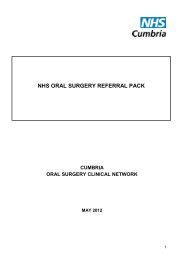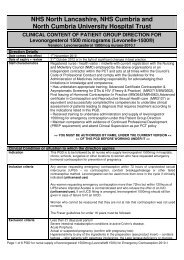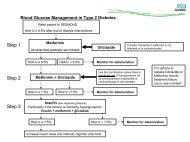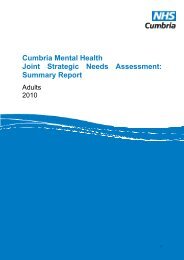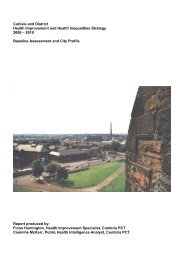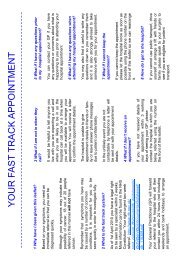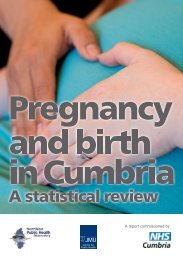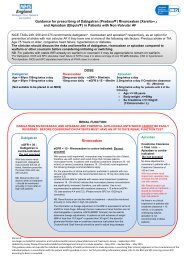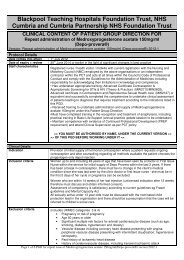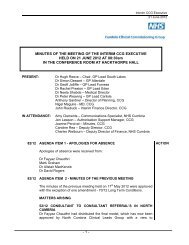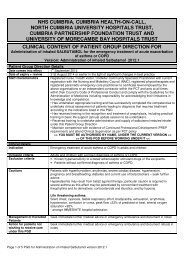Copeland Health Profile 2010 - Cumbria County Council
Copeland Health Profile 2010 - Cumbria County Council
Copeland Health Profile 2010 - Cumbria County Council
Create successful ePaper yourself
Turn your PDF publications into a flip-book with our unique Google optimized e-Paper software.
However, jobs need to be sustainable and offer a minimum level of quality that not only<br />
includes a decent living wage but also the opportunities for in-work development.<br />
Figures for 2009/10 (July 09/June10) showed that in <strong>Copeland</strong> 73.8% of the populations (16<br />
to 64 years) were economically active. This is below the national averaged for Great Britain<br />
of 76.4%. The unemployment rate was 6.8% in <strong>Copeland</strong> compared with 7.7% nationally.<br />
During <strong>2010</strong> in <strong>Copeland</strong>, full-time gross weekly pay was £622.<br />
national rates of £471 and £502 respectively.<br />
This is above regional and<br />
Table 7: Benefit claimants<br />
Working age key benefit claimants (May <strong>2010</strong>)<br />
<strong>Copeland</strong> GB<br />
Number % %<br />
Total claimants 7370 16.5 14.7<br />
Job seekers 1390 3.1 3.5<br />
ESA & incapacity benefits 3820 8.5 6.7<br />
Lone parents 680 1.5 1.7<br />
Carers 710 1.6 1.1<br />
Others on income related benefits 200 0.4 0.5<br />
Disabled 480 1.1 1.0<br />
Bereaved 100 0.2 0.2<br />
Source: nomisweb.co.uk<br />
Table 7 shows benefit claimants living in <strong>Copeland</strong>. In terms of overall claimants; 16.5% of<br />
the working age population of <strong>Copeland</strong> are in receipt of some form of benefit. This is above<br />
the national average of 14.7%. The employment and support allowance (ESA) has replaced<br />
incapacity benefit and income support. In <strong>Copeland</strong> 8.5% of the working age population claim<br />
this allowance, this is above the national average of 6.7%.<br />
Fuel Poverty<br />
The number of extra deaths occurring in winter varies depending on temperature, the level of<br />
disease in the population and other factors. These deaths may be partially attributed to the<br />
fact that many people cannot afford to adequately heat their homes (National Energy Action,<br />
2009). A household is said to be in fuel poverty if it needs to spend more than 10% of its<br />
income on fuel to maintain a satisfactory heating regime (usually 21 degrees for the main<br />
living area and 18 degrees for other occupied rooms). Fuel poverty is caused by the<br />
interaction of a number of factors, but three specifically stand out. These are: energy<br />
efficiency status of the property, cost of energy and household income.<br />
<strong>Copeland</strong> <strong>Health</strong> <strong>Profile</strong><br />
J Clay<br />
29



